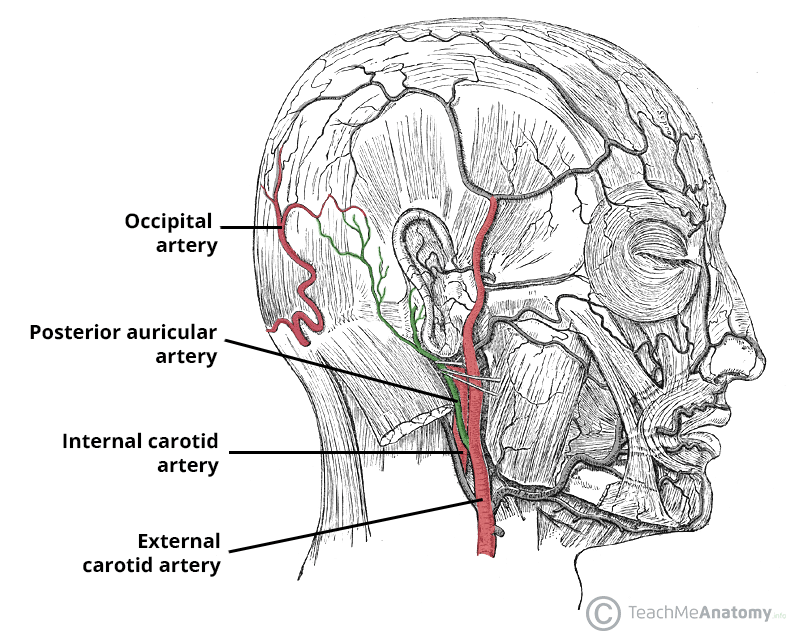The posterior auricular artery is an artery of the head and neck region. It is the sixth main branch of the external carotid artery.
It contributes to the blood supply of the ear and posterior scalp.
Premium Feature
3D Model
Course
The posterior auricular artery arises from the external carotid artery at the level of the styloid process tip.
It travels in a superior direction, passing between the parotid gland (anterior) and the styloid process (posterior).
At the level of the pinna, the posterior auricular artery passes posteriorly to run between the pinna and the mastoid process of the temporal bone.
It terminates by dividing into numerous branches which anastomose with the occipital artery within the posterior scalp area.

Fig 1
The course of the posterior auricular artery. It terminates as several small branches in the posterior scalp.
Supply
The posterior auricular artery contributes to the blood supply of the following structures:
- Stylomastoid branch – supplies the middle and inner ear.
- Posterior tympanic branch – supplies the tympanic membrane.
- Auricular branch – contributes to the supply of the pinna and extrinsic auricular muscles.
- Occipital branch – supplies the posterolateral scalp.
- Parotid branch – supplies the parotid gland.